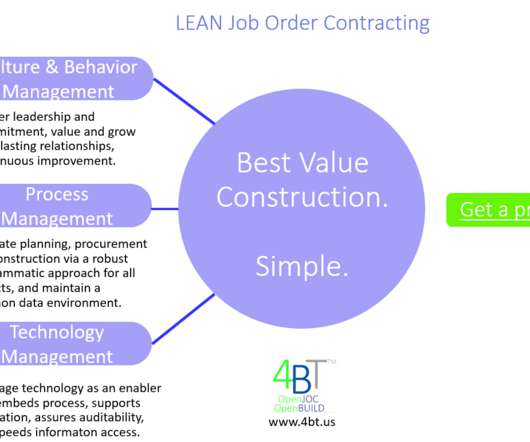Creating a JOC Coefficient?
Job Order Contracting
MARCH 1, 2022
General / Prime Contractor Overhead. General / Prime Contractor Profit and risk. General insurances. Workmen’s compensations insurance. State unemployment insurance. Federal unemployment insurance. Federal unemployment insurance. Mobilization and demobilization costs. Site cleanup.























Let's personalize your content